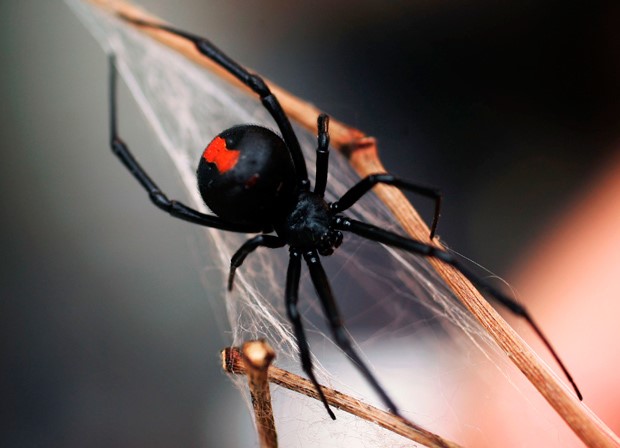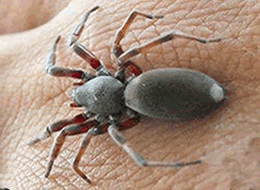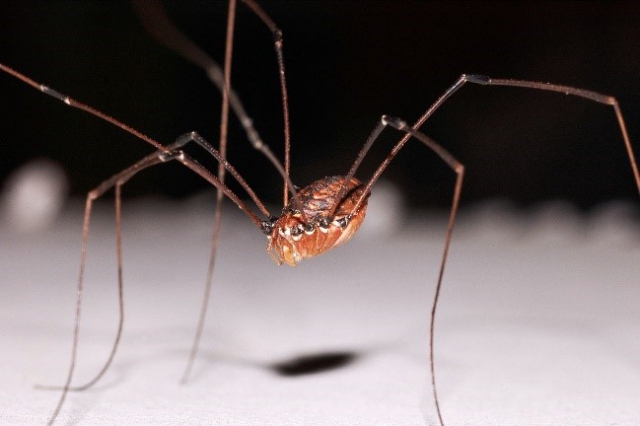Almost every house, garage and shed in Sanctuary Lakes has been a comfortable shelter to numerous species of Native Australian Spiders, especially now, as the weather begins to cool towards winter and the spiders seek warmth indoors.
Although Spiders are a very positive essential to nature’s paradigm, our little housemates tend to incite more fear than favour and even provoking phobias for some. It's true that here in Sanctuary Lakes we do have some venomous spiders, but the Australian spider’s reputation is bigger than its bite: The last death in April 2016 was the country's first recorded spider-caused death since 1981. From personal experience, I can confirm that spiders can give you a nip, but in most cases it’s less troublesome than a bee sting.
All that said, it is still worthwhile taking a close look at four spiders who are probably living or entering your property at this moment. And also discover how these eight-legged arthropods were given their legendry name Arachnid.

Redback Spider (Latrodectus hasseltii)
The Redback is the most dangerous spider residing in Sanctuary Lakes. They enjoy habitating during winter in dark, dry, sheltered places such as sheds, garages, cellars, even mailboxes.
The female redback is immediately recognisable by the prominent long red stripe on her back, for which they are so aptly named. Females of the species tend to be a lot larger than the males, with a body length of about 1 cm compared to 3–4 mm for males who are light brown with white markings and lack the distinctive red stripe.
One unique feature of redbacks’ mating is cannibalism. During mating, not only does the female eat the male, but the male actually assists her in this process by flipping his body towards her so that he is closer to her mouthparts. Because the cannibalistic process is so slow, mating continues until the male succumbs to his injuries.
The Redback is mainly nocturnal; the female remains concealed during the day, and spins her web during the night, usually remaining in the same location for most of her adult life, normally between two to three years.
Since Redback Spiders don’t stray from their webs often, it is unlikely that a human will be bitten unless they come into direct contact with the web or female spider. The bite of the Redback Spider can be highly venomous. It is characterised by intense localised pain around the bite site. Other common symptoms are, sweating, muscular weakness, loss of coordination, nausea, vomiting and in serious cases convulsion. Apply an ice pack or a cold compress to lessen the pain. If the casualty is a young child, a pregnant woman or if a collapse occurs and pain is severe, transport the casualty to emergency medical treatment.
Antivenom is always available.

White-tailed Spider Lampona cylindrata
Named because of the distinctive whitish tips at the end of their abdomen. The White-tail is medium size spider with a body size of up to 18 mm, with a leg-span of 28 mm. White-tailed Spider had a venomous reputation, but in truth their bite may cause a small red or discoloured bump, similar to an insect bite, that burns or itches. An ice pack should relieve any discomfort. If the pain continues after 24 hours seek medical help.
White-tail spiders are vagrant hunters that usually roam at night. Instead of spinning webs and eating insects, they prefer to feast on other spiders. In cold weather they will enter homes seeking tight spaces where they can hide. Our little housemates are commonly found hibernating in bedding, clothing and towels that are left on the floor.
White-tails make temporary silk retreats and spin disc-shaped egg sacs, each containing up to 90 eggs. Females live between one to two years.

Huntsman Spider Holconia immanis
The Huntsman is the largest of our spiders with a diameter of up to 45mm and one most commonly found in our houses, where it hunts at night on walls and ceilings. It also occasionally enters the cabins of vehicles, causing much alarm as its large hairy legs appear from under the visor or runs rapidly, often in a sideways direction, across the dashboard.
Huntsman spiders can be an ally in the house; they help with pest-control by eating smaller insects. and other invertebrates. Their egg sac is flat, oval and constructed of white papery silk. It is most commonly deposited in crevices within ceilings or outside, beneath the bark of trees. The Huntsman’s lifespan is about two years.
Despite its intimidating appearance this is a timid spider and bites are infrequent. Symptoms are minor, including local pain and swelling. Again, icepack should suffice in reducing any minor pain or swelling.

Daddy Long Legs Pholicus Phalangioides
Almost every house or shed in Sanctuary Lakes has been home to the messy, tangled web of the Daddy-long-legs. Although we remove their webs regularly with the broom, somehow, they always manage to find their way back in again. They're hard to dislike, with their spindly and delicate legs, fragile peanut shaped body and fangs, which are far too tiny to pierce human skin. Yet despite their apparent harmlessness, Long-legs have little trouble catching, wrapping and killing much larger spiders.
Long-legs hatch from eggs, and when hatched, look like small adults who shed their skin as they grow. It takes about a year for the baby spiders to develop from egg to adult. Male Daddy-long-legs typically live for about one year and die after mating. Females can live for three years.
Humans have always lived with spiders and they are symbolic characters in many of our myths and legends. For example, the word Arachnid, for spider and Arachnophobia, fear of spiders, comes from Greek mythology story of Arachne.
Arachne, was a beautiful woman who had a great talent in weaving. Everyone was amazed at her work and one day, Arachne boosted that she had a greater talent than goddess Athena herself. This was an offense towards the gods, which was a very serious and even deadly sin for the ancient Greeks. As punishment Athena transformed her into a spider to spend the rest of her life weaving webs.
Now, we are all living our lives reading web sites!
Spider venom contains a cocktail of chemicals, some of which can be harmful, but humans are not really the intended victims. Spider venom is designed for small prey and delivered in minute quantities, while often fatal to tiny creatures, it normally can be handled easily by bigger organisms.